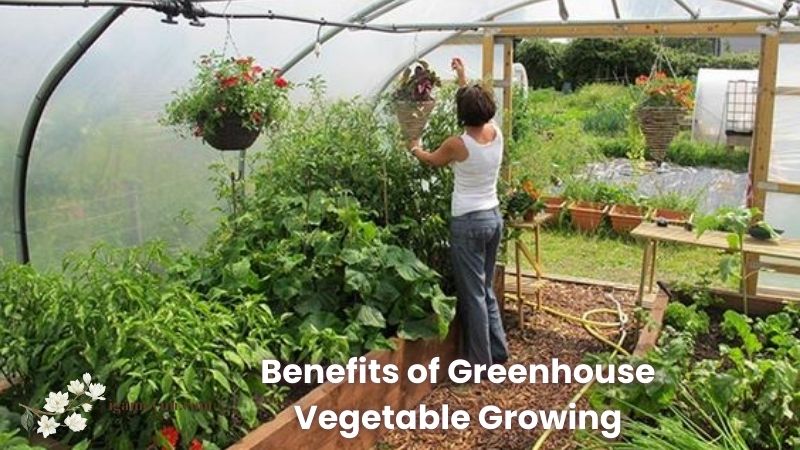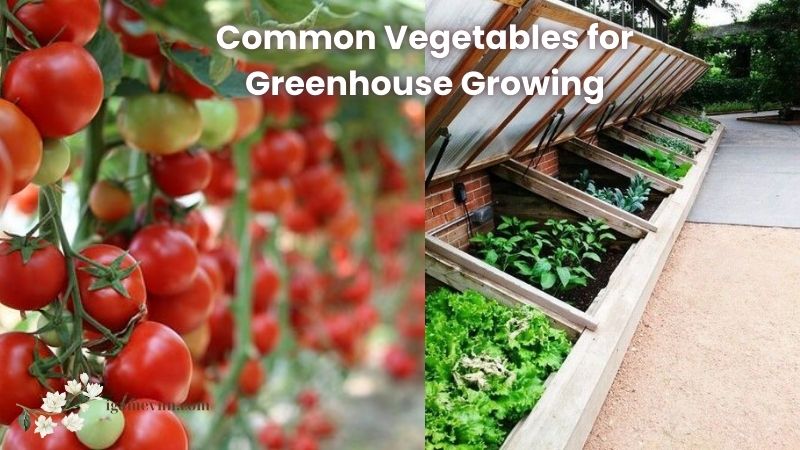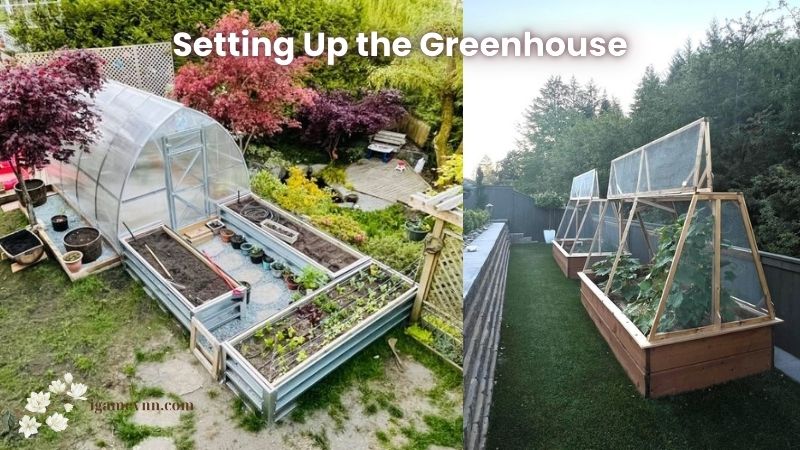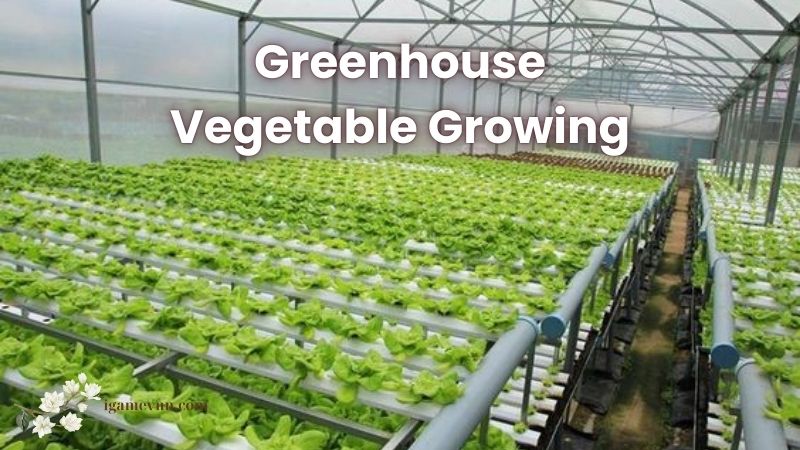Greenhouse vegetable growing is a highly efficient method to produce fresh vegetables year-round. This practice offers control over the growing environment, optimizing plant health and yield, and provides numerous benefits, including an extended growing season, pest and disease control, and efficient water use. Here Igamevnn‘s a comprehensive guide to help you embark on your greenhouse vegetable growing journey.
Table of Contents
ToggleBenefits of Greenhouse Vegetable Growing

- Extended Growing Season: Greenhouses allow you to grow vegetables beyond the typical outdoor growing season. By providing a controlled environment, you can cultivate plants even in cold weather, ensuring a continuous supply of fresh produce.
- Pest and Disease Control: The enclosed space of a greenhouse reduces exposure to pests and diseases, protecting your crops and minimizing the need for chemical interventions.
- Climate Control: Greenhouses offer the ability to regulate temperature, humidity, and light, creating the perfect conditions for each type of vegetable. This control enhances plant growth and yield.
- Water Conservation: Compared to traditional outdoor gardening, greenhouses use water more efficiently. Drip irrigation systems, commonly used in greenhouses, deliver water directly to the plant roots, reducing waste.
Key Considerations for Greenhouse Vegetable Growing
- Location and Orientation: Choose a sunny spot with good drainage for your greenhouse. The structure should be oriented to maximize sunlight exposure, typically in an east-west direction to capture the most light throughout the day.
- Structure and Materials: Greenhouses can be made from various materials, including glass, polycarbonate, and polyethylene. Each material has different light transmission and insulation properties. Glass provides excellent light transmission but is fragile and expensive. Polycarbonate is durable and offers good insulation, while polyethylene is cost-effective and easy to install.
- Heating and Cooling: Maintaining optimal temperatures is crucial for greenhouse vegetable growing. Options for heating include electric or gas heaters, while cooling can be achieved through fans, vents, and shading.
- Irrigation Systems: Efficient irrigation is essential in greenhouse vegetable growing. Drip irrigation is a popular choice, as it delivers water directly to the plant roots, minimizing evaporation and runoff. Automatic systems can ensure consistent watering, reducing the workload.
Common Vegetables for Greenhouse Growing

- Tomatoes: These are a favorite for greenhouse vegetable growing due to their high yield and long growing season. They require support structures like trellises and consistent watering.
- Cucumbers: Preferring warm temperatures, cucumbers thrive in greenhouses. They need trellising to support their growth and prevent disease.
- Peppers: Both sweet and hot peppers grow well in the controlled environment of a greenhouse. They need well-draining soil and consistent warmth.
- Lettuce: Lettuce is ideal for greenhouse vegetable growing, as it grows well in cooler temperatures and can be harvested multiple times.
- Herbs: Basil, parsley, and cilantro are popular choices for greenhouse cultivation. They grow quickly and can be harvested frequently.
Steps to Start a Greenhouse Vegetable Garden
1. Planning:
- Select Vegetables: Choose vegetables based on your climate, space, and personal preferences. Start with a few easy-to-grow varieties and expand as you gain experience.
- Design the Layout: Plan your greenhouse layout to include walkways, raised beds, and vertical growing spaces if necessary. Consider the space requirements of each vegetable and allow room for growth and maintenance.
2. Setting Up the Greenhouse:
- Construct the Greenhouse: If you are using a kit, follow the manufacturer’s instructions for assembly. For custom-built greenhouses, design the structure to suit your needs and budget.
- Install Heating and Cooling Systems: Ensure that temperature control systems are in place. Heaters, fans, vents, and shading will help maintain the ideal environment for your plants.
- Set Up Irrigation: Install a drip irrigation system or other efficient watering methods. Automatic systems can help maintain consistent moisture levels, crucial for healthy plant growth.

3. Soil and Planting:
- Prepare the Soil: Use high-quality, well-draining soil or soilless mixes. Amend the soil with compost or organic matter to improve fertility.
- Plant Seeds or Seedlings: Follow the spacing and depth guidelines for each vegetable. Start seeds indoors and transplant seedlings when they are strong enough to thrive in the greenhouse environment.
4. Maintenance:
- Watering: Maintain consistent moisture levels appropriate for each plant type. Overwatering and underwatering can both harm your plants.
- Fertilizing: Use organic or synthetic fertilizers as needed. Regular feeding will ensure that your plants receive the necessary nutrients for growth.
- Pruning and Training: Regularly prune and support plants like tomatoes and cucumbers. Pruning encourages healthy growth and improves air circulation, reducing the risk of disease.
5. Pest and Disease Management:
- Monitor Plants Regularly: Check for signs of pests or disease. Early detection is key to managing problems before they become severe.
- Use Integrated Pest Management (IPM): Combine biological, cultural, and mechanical methods to control pests. Introduce beneficial insects, use barriers, and maintain proper sanitation to keep your greenhouse environment healthy.
6. Harvesting:
- Harvest at the Right Time: Each vegetable has an optimal harvesting period. Harvesting at the right time ensures the best flavor and nutritional value.
- Handle with Care: Proper handling and storage can prolong the shelf life of your vegetables. Use clean tools and containers to avoid contamination.
Tips for Successful Greenhouse Vegetable Growing
- Start Small: Begin with a few vegetables and expand your greenhouse garden as you gain experience and confidence.
- Record Keeping: Keep a garden journal to track planting dates, varieties, and outcomes. This information will help you improve your practices over time.
- Continuous Learning: Stay informed about the latest greenhouse gardening techniques and innovations. Join local gardening clubs or online forums to connect with other greenhouse gardeners and share knowledge.
Resources
- Books: “The Greenhouse Gardener’s Manual” by Roger Marshall is an excellent resource for beginners and experienced gardeners alike.
- Websites: University extension programs often have detailed guides on greenhouse vegetable growing. Check their websites for region-specific advice and resources.
- Community: Joining local gardening clubs or online forums can provide support and inspiration. Sharing experiences with other greenhouse gardeners can be invaluable.
Conclusion
Greenhouse vegetable growing offers the opportunity to enjoy fresh, homegrown produce year-round. By following these guidelines, you can create a productive and enjoyable greenhouse vegetable garden. Whether you are a seasoned gardener or a beginner, greenhouse vegetable growing is a rewarding and sustainable way to cultivate your favorite vegetables.

